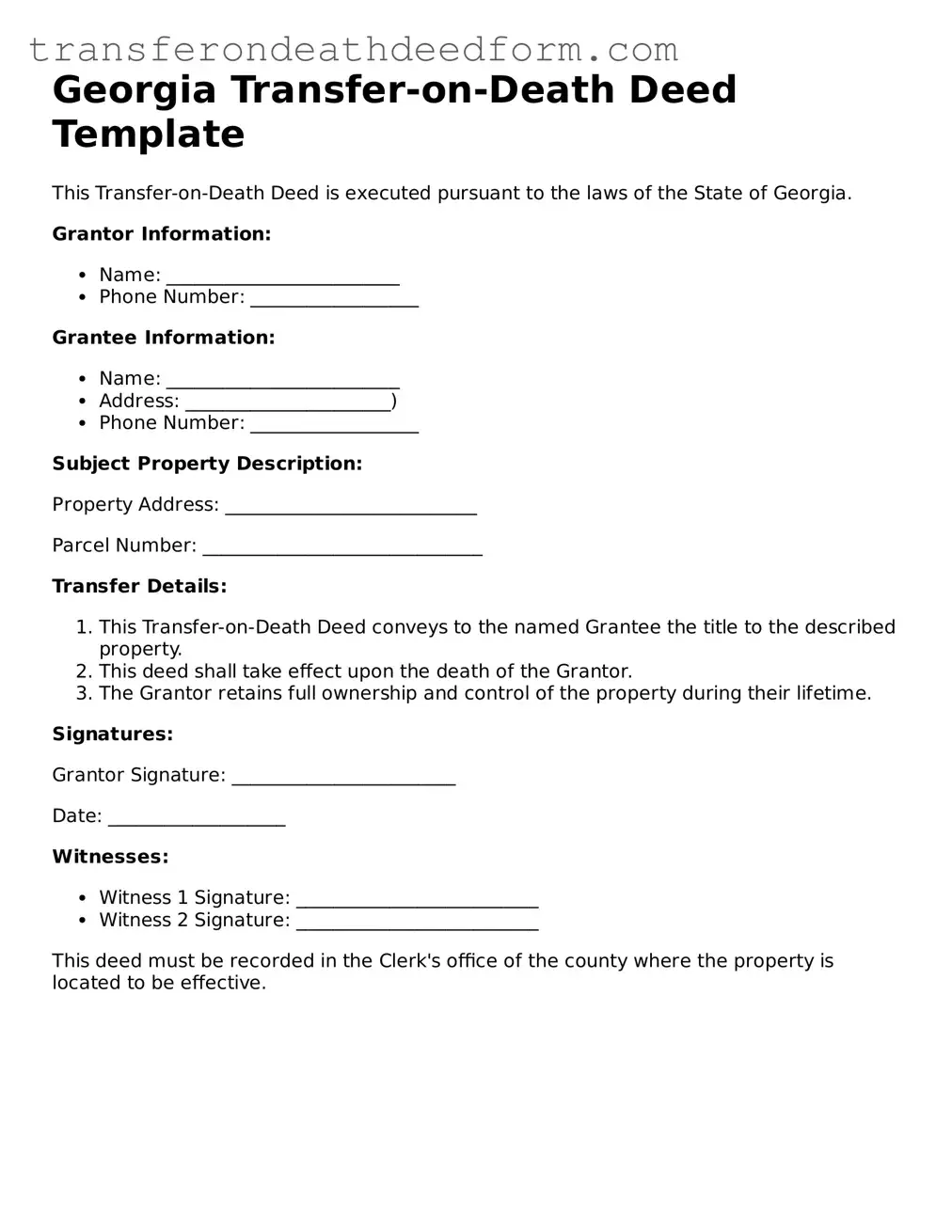Transfer-on-Death Deed Form for Georgia
The Georgia Transfer-on-Death Deed form is a legal document that allows property owners to designate beneficiaries who will receive their real estate upon the owner's death, bypassing the probate process. This deed offers a straightforward way to transfer property, ensuring that loved ones inherit without the complications often associated with traditional wills. Understanding this form can help individuals make informed decisions about their estate planning needs.
Get My Document
